Are you struggling with limited space and unable to grow sprawling zucchini plants? Why not train your crops to grow vertically instead?
Zucchinis, reliable, fast-growing, and prolific, are a staple in backyard gardens. However, did you know that zucchinis can be trained to grow vertically in a novel space-saving manner, allowing for plant cultivation in smaller areas?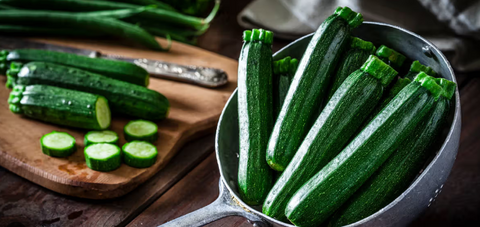
As part of the summer squash family, zucchinis—or courgettes as they're also known—tend to take up a lot of space during their growth, with their large leaves and sprawling vines. This can pose a problem for anyone with limited space, making vertical zucchini gardening an ideal solution.
If you're keen to learn how to grow zucchinis in this beneficial way, two vertical zucchini growers share some expert tips on the right techniques for growing zucchinis. Having grown zucchinis in my own vegetable garden for years, but always in the same manner, this is a method I'm eager to try myself.
How to Vertical Garden Zucchinis?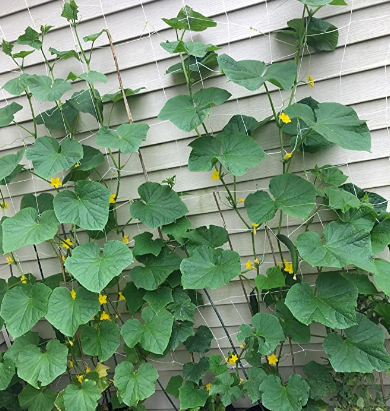
Training these typically bushy plants to grow vertically rather than horizontally may sound tricky, but with care and attention, it can be accomplished. It requires sturdy support structures, regular training and tying, and some pruning for success—all alongside the usual watering, feeding, and harvesting. If vertical cropping is entirely new to you, let's explore the benefits it offers and some key areas that need to be handled correctly.
Benefits of Vertical Zucchini Gardening
Zucchini plants can take up a significant amount of space in a garden, with a single specimen potentially sprawling up to five feet wide—depending on the specific variety. For those with small gardens and limited outdoor space, this vast footprint can be a hindrance to zucchini cultivation.
This is where vertical zucchini gardening shines. Growing plants as part of the vertical gardening concept means they take up much less space. It allows for potentially more zucchinis to grow in a given space and frees up soil space around the base of the plant, where you can cultivate fast-growing vegetables, reaping a harvest from that space.
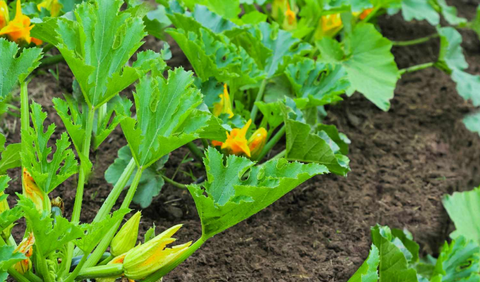
Apart from being a space-saving method, vertical cropping helps combat zucchini pests and diseases.
Vertical growth aids in preventing mold, allowing better airflow among the leaves. I usually remove all leaves growing beneath the fruits to help provide better airflow.
It also enables you to spot any issues early on. Typically, squash bugs like to lay their eggs underneath the leaves, so you can better identify these leaves to either remove the entire leaf or the eggs.
Lifting the fruits off the soil also helps prevent pests from nibbling on the zucchinis and can promote more even development of the growing fruits.
Tips for Successful Vertical Zucchini Gardening
You can either purchase zucchini plants from a garden center or nursery and plant them in your vegetable garden or sow zucchini seeds indoors in April and transplant them outdoors in May.
Planting
Whether you're transplanting seedlings into the garden after the risk of frost has passed or directly sowing seeds, it's advisable to have trellises or support structures in place during planting.
When vertically gardening zucchinis, space the plants at least two feet apart, ideally with each plant having an area close to 4 square feet. These plants thrive in fertile, well-drained soil and in sunny spots in the garden. Alongside watering and feeding the crops, training and pruning the plants are also key to success.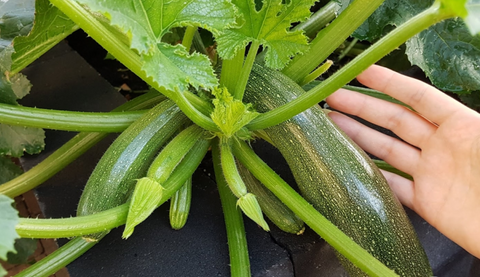
Training
Zucchini plants can be trained to grow vertically on a variety of garden trellises, including solid wooden stakes, rustic homemade trellises, pergolas, or arches, or tomato cages.
Providing support during zucchini planting is beneficial. It's easier to install around the seedlings and eliminates the risk of damaging the plants when attempting to put them in place as they grow.
A key tip for successful vertical zucchini gardening is choosing the right support. In my practice, placing a 6-foot-tall stake during planting effectively supports the plants.
Sow or transplant seedlings about 3 inches from the south side of the stake, ensuring optimal sunlight exposure. As the plant grows, tie it to the stake regularly (about every six inches) with simple garden twine to keep it upright and support the weight of the fruits.
It's advisable to remember to tie the plants to the trellis regularly—using natural twine from Amazon or any other soft ties—since zucchini plants grow rapidly, and stems may start to droop from the trellis. Leaving them for too long, you might risk breaking the stem while attempting to encourage it back onto the trellis.
Pruning
With rapid plant growth, regular pruning is also a key task. This will help ensure continuous airflow around the plant—aiding in preventing fungal diseases like powdery mildew, which causes zucchini leaves to turn white—and directing the plant's energy into fruit production.
Plants don't need all their leaves as they grow, so you should start removing lower leaves beneath the fruits as they develop. Trim off excess leaves with clean, sharp pruning shears to redirect energy to fruiting.
Harvesting
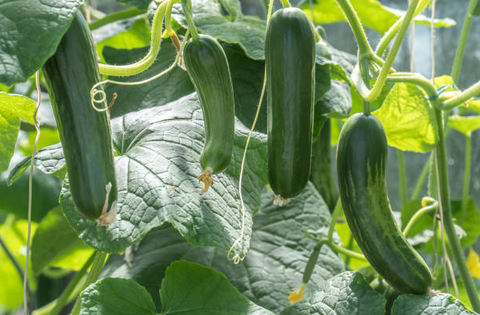
As the plant develops, regular harvesting of zucchinis will also lead to ongoing fruit production. Harvesting fruits when they reach usable size also reduces the load on the climbing plant, ensuring a steady supply of zucchinis for you. You can also harvest zucchini flowers from the plant, to eat raw or cooked.
Vertical Zucchini Gardening in Tomato Cages
Tomato cages are one of the best methods for vertical gardening zucchinis. As the plant grows, the vertical zucchini cage will surround it, providing sturdy support for training the plant.
Place seeds in the center of the cage and push them into the ground until the first crossbar.
As the plant grows, weave upper leaves horizontally around the cage, keeping up with the plant's growth. Failure to do so may cause some issues as the leaves move horizontally through the tomato cage.
Vertical zucchini plants don't grow too tall. Depending on the variety, plant height can reach around 3-4 feet. Using a 6-foot-tall stake as support, driving it into the ground 2 feet and leaving 4 feet above the ground for training the plant is recommended.
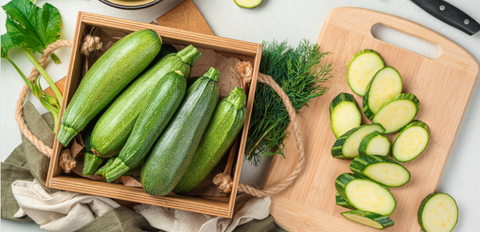
Aside from zucchinis, many varieties of summer and winter squash can also be trained to grow vertically rather than sprawling horizontally on the soil, taking up a lot of space. If you intend to vertically garden squash, compact summer squash types and smaller-fruited winter squash varieties are ideal choices.









